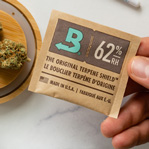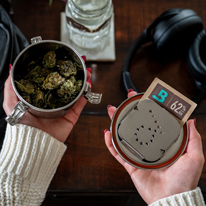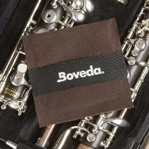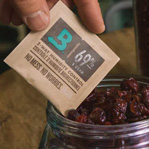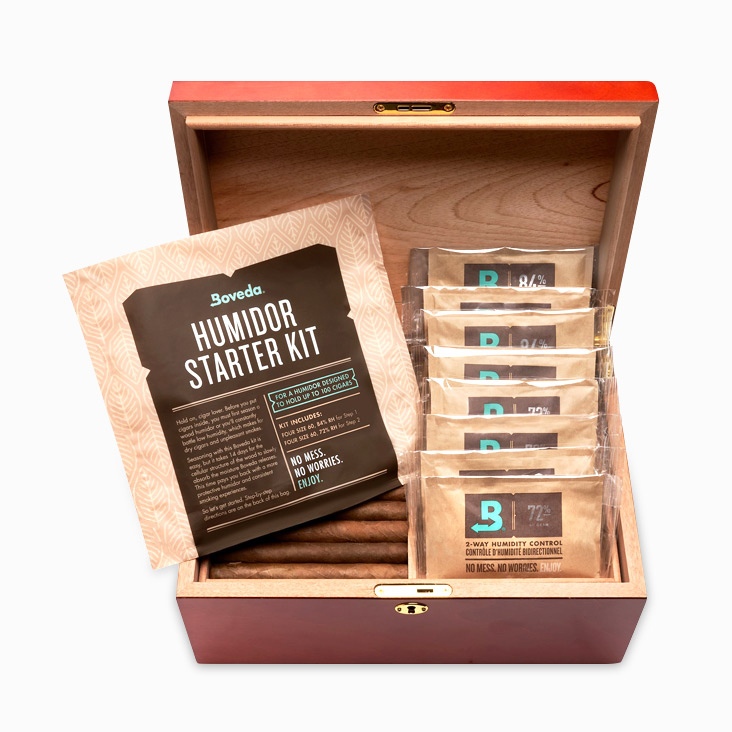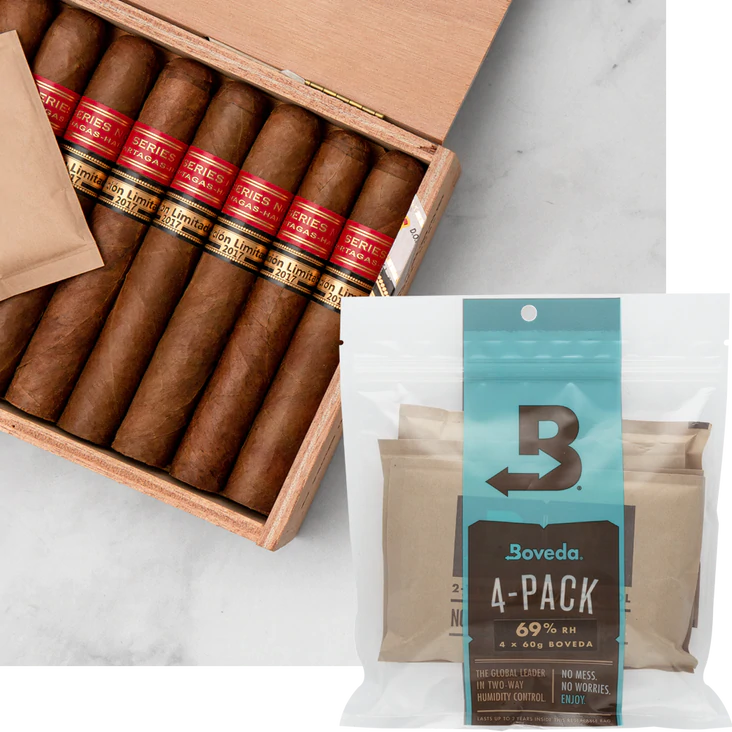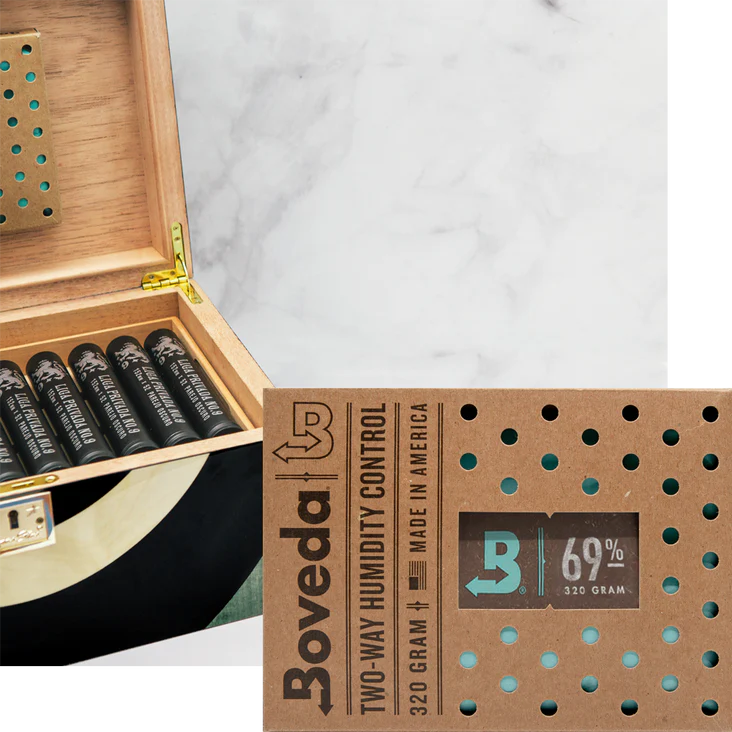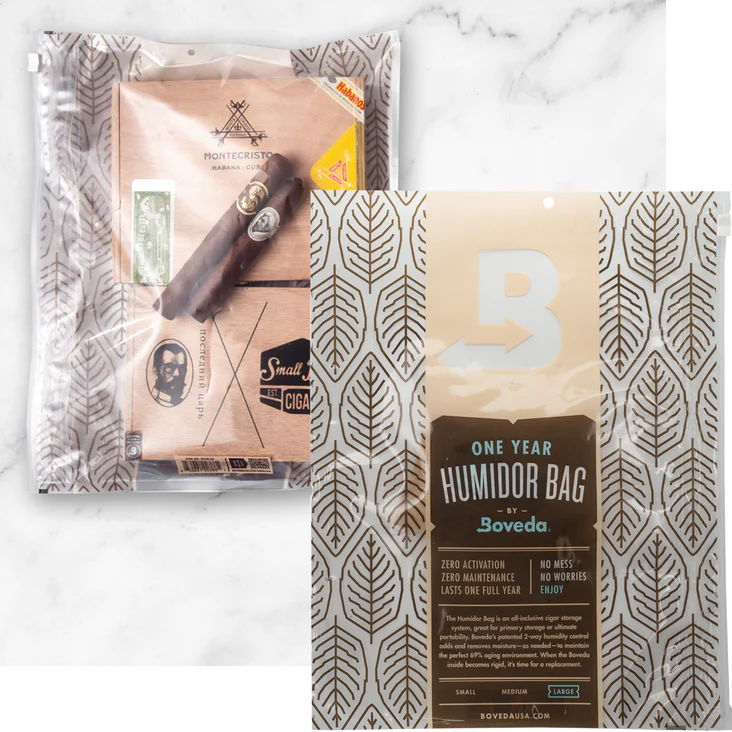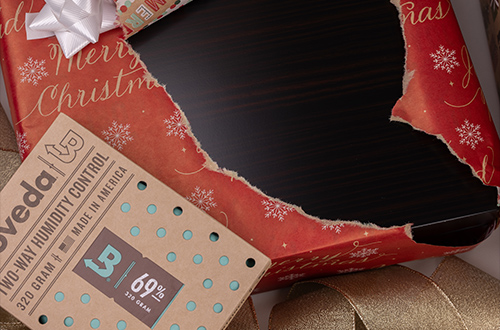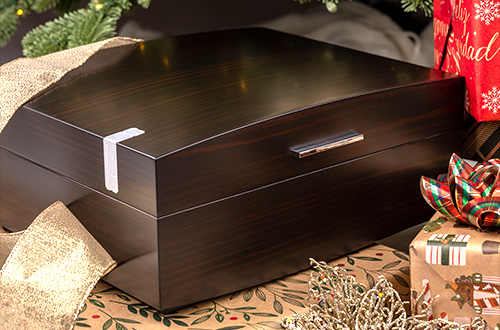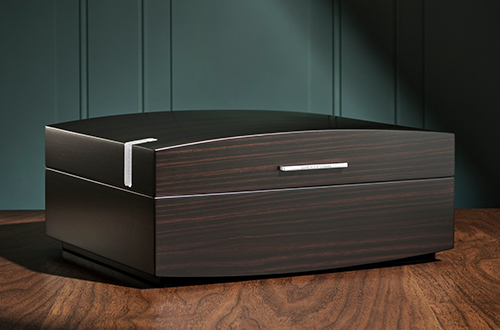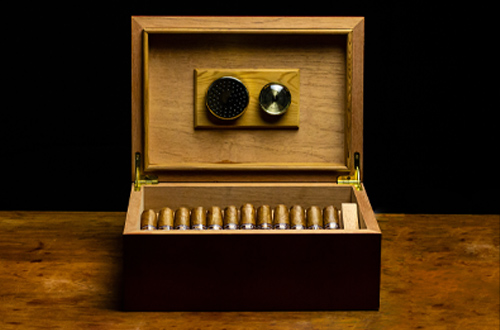
Cigars are as diverse as the people who enjoy them. And like other fine products (looking at you, wine), hobbyists like to geek out over the myriad types available. Some prefer a short, stubby cigar with a bold, in-your-face flavor that pairs well with a brandy and leatherbound book. Others prefer a gentler, slimmer smoke to fit neatly in their travel cigar humidor as they tour the globe. And some cigar aficionados fall in that “Goldilocks” middle of the road, content with the “midsize sedan” equivalent of a cigar—classic and dependable. Feel like you need a personal cigar guide yet?
Is there a right or wrong type of cigar? Absolutely not. Which cigar you choose is ultimately a reflection of your taste, time frame, circumstances and sensibilities. Most cigar enthusiasts keep several cigar types stocked in their humidors—with Boveda humidity packets to keep everything fresh, of course.
If you’re new to cigars and want to diversify your humidor, this is your article. Below, we explore different types of cigars by looking at three critical characteristics: length, shape and color.
Your Cigar Guide to Ring Gauge and Length
The first way to differentiate cigars is by size. And like all cylindrical objects, the size of a cigar is measured by its length and diameter (known as “ring gauge” in cigar speak). As you browse the walk-in humidor at a cigar shop or the digital sections of an e-tailer, you’ll notice that cigars come in all shapes and sizes: short and stout, long and thin, short and skinny, long and fat, etc.
But before you go into a cigar shop asking for a “long and fat cigar,” understand that there’s cigar-specific terminology. Below you’ll find a few of the most common sizes of cigars, listed alongside their length and ring gauge. Note that when we talk about ring gauges, a “ring” is equivalent to 1/64th of an inch, and so a gauge is expressed as a fraction of an inch (50/64th is simply called a “50 gauge,” e.g.).
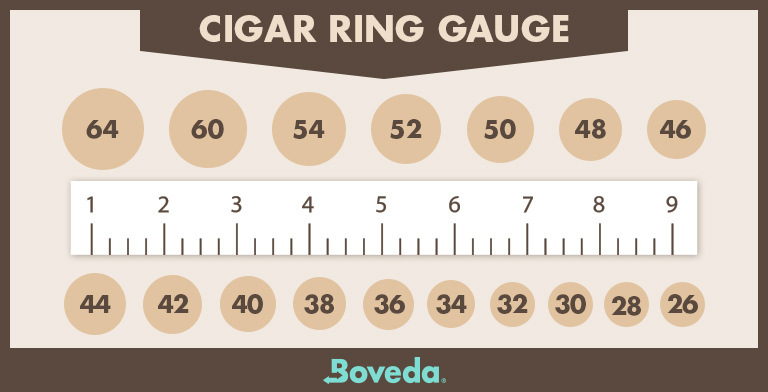
SHOP SMART FOR CIGARS—POPULAR CIGAR TYPES & HOW BIG THEY ARE:
- CIGARILLO: 3.5 inches x 25
- PETIT CORONA: 4.5 inches x 42
- GORDITO: 4.5 inches x 60
- ROBUSTO: 5 inches x 52
- GORDO: 6 inches x 60
- PANATELA: 6 inches x 34
- CHURCHILL: 7 inches x 48
- DOUBLE CORONA: 7.5 inches x 50
- GRAN CORONA: 9.5 inches x 47
Does size matter in a cigar? Yes and no. Cigar gauge does have some impact on intensity, and cigar length does influence how long it takes smoke to reach your palate. But there are complicating factors like the wrapper leaf, filler, binder and specific brand that outweigh any differences you might notice from the size. Additionally, how a cigar was stored is a far more significant determinant of flavor than size. Read our resources on the role of cigar humidity and how to humidify a cigar for more information.
What Cigar Size Should I Buy?
Boveda’s Nate Beck says it’s ok to not finish a whole stick.
Your Cigar Guide to Shape
The next thing to know about cigar types is that, in addition to size, you will also find a wide variety of shapes. The size types listed above are mostly examples of parejos, essentially any cigar that has a straight cylindrical shape. While parejos remain the most common cigar shape, recently, makers have branched out—reviving older styles or even inventing a couple of new ones. Typically, cigars that don’t fall under the parejos designation are called figurados, which literally translates to a “figured” shape (as opposed to, we suppose, a conventional shape). If you want to roll into your next bachelor party, girl’s night out or wedding with a head-turning cigar, consider a figurado. They include:
- THE PERFECTO, a kind of elongated football shape with either side tapered
- THE TORPEDO, BELICOSO & PYRAMID, cigars with tapered heads and blunt cut feet that resemble a torpedo or (if you really squint) a pyramid
- THE CULEBRA, a cigar made from three braided panatela cigars. These cigars are meant to be unbraided before enjoying, and feature a contorted, corkscrew-like shape (Learn how to smoke a Culebra cigar in this video How Do You Smoke This Thing?)
Some die-hard cigar lovers swear by their favorite figurado. As you build out your home humidor with different types of cigars, add a few to your collection to mix things up. When dealing with a strange shape, it’s also best practice to brush up on Boveda’s resource on how to cut a cigar.
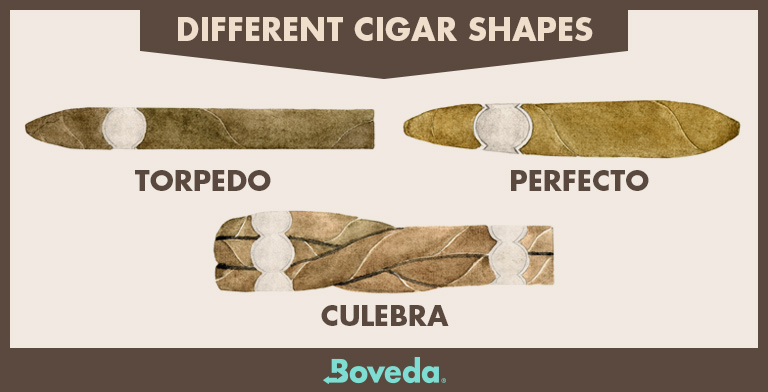
Your Cigar Guide to Color
The last defining feature of a cigar is its color, which it gets from the wrapper leaf. This might not seem like a sizable deal—after all, the wrapper is a scant portion of the overall cigar—but, by some accounts, the wrapper accounts for between 60% and 80% of the cigar’s flavor. That means, if you’ve ever suffered through dry cigars, there’s a good chance you noticed the degradation of the wrapper’s flavor.
A wrapper’s color will dictate the types of cigar flavors you’ll find. And in general, three central factors affect that color: the strain of tobacco used, its sunlight exposure and maturation. Because cigar wrappers are an organic product plucked from the earth, you’ll find infinite varieties. Nevertheless, cigar producers classify color in four main categories:
- CLARO, or “clear,” indicating a fresh and early-picked leaf whose minimal flavor allows the filler tobacco to shine.
- COLORADO, the middle-of-the-road in terms of color, whose flavor profile is robust without being overpowering.
- MADURO, a mature leaf whose lengthy cure imparts chocolaty, coffee-like notes.
- OSCURO, the darkest of them all, bears its long fermentation time in woodsy, smoky aromas and an almost carmelly taste.

At the risk of sounding like a broken record, it’s imperative to store your cigars properly to maintain the subtle aromas and tasting notes associated with these colors. If you haven’t bought one yet, invest in a cigar humidor, or at the least a specialty humidor bag. And regulate the RH in your humidor with inexpensive Boveda cigar humidor packs. As the most trusted brand in the cigar industry, Boveda is your cigar guide to humidity protection that’s used by countless aficionados to keep their cigars fresh and flavorful—whatever their size, shape or color.
Learn More About Cigar Wrappers
Hear why cigar wrappers and the soil that tobacco is grown in influences cigar flavor from the legendary tobacco grower, John Oliva, owner of Oliva Tobacco Company. Light a cigar and enjoy this episode of Boveda’s cigar podcast.

